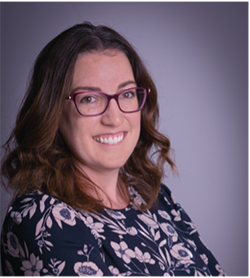
Bio: Erika Bechtold is currently leading US commercial activities as the VP of US Operations. Erika brings 10+ years of early-stage startup and commercial experience, holding a variety of roles at Boston-area Universities as well as at a previous Boston-based biotechnology company Sofregen Medical Inc., a Tufts University spin-out developing injectable products for soft tissue augmentation.
Prior to Erika’s role at UpNano, she was the Director of Technology Commercialization at Harvard University’s Office of Technology Development, supporting the Wyss Institute for Biologically Inspired Engineering. At the Wyss Institute, she worked closely with the faculty, staff, and business teams at the Institute to commercialize their ideas and inventions through strategic partnerships and licensing agreements with academic, venture and industry partners. She additionally supported key spin-outs from the Institute, as well as strategic initiatives for the executive team of the Wyss and the Chief Technology Development Officer at Harvard.
Erika earned a doctorate in Biological Chemistry from Wake Forest University and completed her postdoctoral work under the guidance of Jacquin Niles in the Biological Engineering Department at the Massachusetts Institute of Technology.
Abstract: The unique capabilities of 2-photon polymerization (2PP) for 3D printing have allowed researchers in recent years to create a variety of micron and submicron photopolymerized structures, as well as extend the capabilities for fabrication of micro-components as well as MEMS [1]. Limitations of other additive manufacturing strategies include low resolution and limitations in the material choices available. Because 2PP is a nonlinear process where a near-infrared laser pulse is absorbed by a photosensitive material, polymerization will only occur in the area where the laser focal point is directed, this method does not require layer-by-layer deposition of the material. Additionally, by controlling the exposure dose, high resolution is achieved by polymerizing small volume pixels [2].
In this seminar, UpNano will present their NanoOne 3D printing technology and highlight several recent case studies where the machine has been used to extend what is currently achievable in high-resolution manufacturing. NanoOne is unique from other commercial 2PP systems because of the significantly higher speed, piezo precision stage and mesoscale build volume. This talk will feature recent work in bioprinting whereby 2PP was used to generate microvascular structures directly on-chip [2]. It will also highlight a study where 2PP was used to build high-purity conductive platinum nanostructures, which applications in mictroheathers, thermocouple sensors and Lab-on-a-Chip systems [3]. Recently published work in generating nanoliter perfusion microfluidic systems for commercial-scale [4] and creating 3D casting molds of fused silica for high-precision metal printing [5] will also be discussed.
REFERENCES:
[1] Int J Adv Manuf Technol (2010) 48: 435 – 441.
[2] Biofabrication (2021) 13: 015016.
[3] Adv Mater (2021) 33: 2101992.
[4] Scientific Reports (2023) 13:562.
[5] Nature Communications (2022) 13:5048.